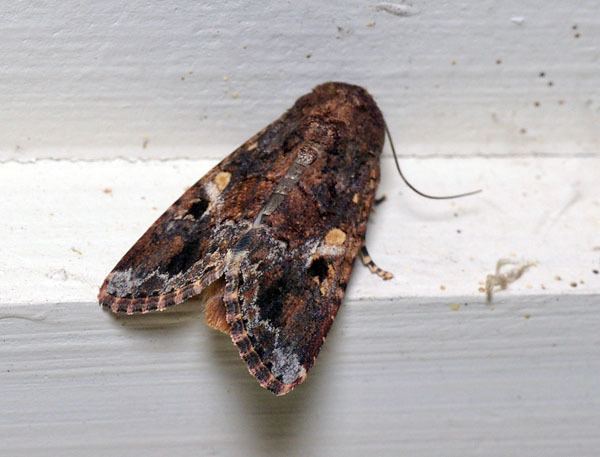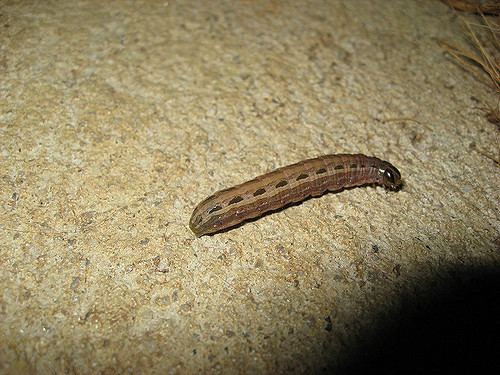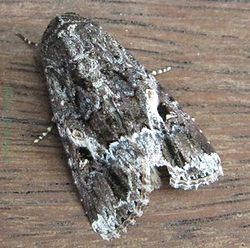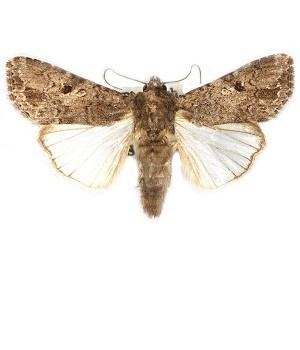Genus Spodoptera Rank Species | ||
 | ||
Similar African armyworm, Spodoptera cilium, Callopistria maillardi, Mocis frugalis, Spodoptera picta | ||
Spodoptera mauritia, the lawn armyworm, also known as paddy swarming caterpillar, is a moth of the family Noctuidae. Cosmopolitan species, it is a major polyphagous pest throughout the world.
Contents

Distribution

It is widespread from the Red Sea to India, Burma, Sri Lanka, Malaya to Australia and widespread in the Pacific Islands, including the Solomons, New Hebrides, Fiji, Samoa, Hawaii, the Society Islands, Austral Islands, Marquesas and Marshall Islands.
Description
The wingspan is about 40 mm. Dark grey-brown with a rusty tinge on body. Abdomen fuscous. Fore wings with sub-basal, antemedial, and postmedial double waved lines indistinct. The orbicular small and ochreous, whereas reniform blackish. Submarginal line whitish and irregularly waved. There is a white patch often can be seen between orbicular and reniform and a dark patch on the central marginal area. Hind wings opalescent and semi-hyaline white, with a dark marginal line.
Ecology

The larvae feed on various grasses, including rice, wheat, Cynodon, Pennisetum clandestinum, Sorghum bicolor, Oryza sativa, and Casuarina equisetifolia. They are considered one of the major international agricultural pests on crops and pastures. Unlike other insects, armyworm caterpillars of sixth instar do not excrete uric acid, instead they excrete urea as nitrogenous wastes.
Damage and Control
Plants attacked by caterpillars have skeletonized leaves, shot holes, and dieback stems. Commonly the entire paddy crop dies within few days due to swarming attack. Hand picking and other mechanical methods are used to reduce infection. Adults can eliminated by introducing Bolas spiders to the fields. This spider has the ability to spray a pheromone similar to female moth, to attract male moths. The nematode Steinernema carpocapsae and usage of viruses like Nucleopolyhedrovirus are also effective. Moths traps like wing traps and unitraps can also used to collect adults.
